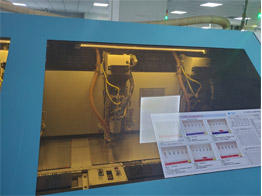
As a PCB Assembly Company, share with you. The design of PCB single-sided circuit board requires contact with a lot of professional data and some knowledge of physics. It can be said that it is a comprehensive technical project. If you want to make a high-quality circuit board, you need not only a solid foundation, but also sensitivity to impedance. The impedance involved inPCB Bare Board mainly includes the following aspects:
When the direct current of the printed PCB circuit board passes through the wire, there will be a resistance. This resistance is called resistance, which is R, and the value unit is "ohm" (Ω).
The relationship between resistance and current and voltage is: R = V / I
In addition, the resistance is also related to the resistivity of the conductor material (β), the length of the wire (L), and the cross-sectional area of the conductor (S). R = βL / S
1. Resistance
When alternating current flows through a conductor, the resistance it receives is called impedance (Impedance), which is Z, and the unit is Ω.
The resistance at this time is different from the resistance encountered by DC current. In addition to the resistance of resistance, there are resistance problems of inductive reactance (XL) and capacitive reactance (XC).
To distinguish the resistance of direct current, the resistance encountered by alternating current is called impedance (Z).
Z = √R2 + (XL-XC) 2
2. Impedance (Z)
In recent years, with the improvement and application of IC integration, its signal transmission frequency and speed are getting higher and higher. Therefore, in the printed wiring board, after the signal transmission (transmission) reaches a certain value, it will be affected by the printed wiring The impact of itself, resulting in severe distortion or complete loss of the transmitted signal. This shows that the “things” that the PCB wires “circulate” are not electric currents, but the transmission of square wave signals or pulses in energy.
3. Characteristic impedance control (Z0)
The resistance to the above-mentioned "signal" transmission is also called "characteristic resistance", and the representative symbol is Z0.
Therefore, it is not enough to solve the problems of "on", "off" and "short circuit" on the PCB wire, but also to control the characteristic impedance of the wire. That is to say, the transmission line of high-speed transmission and high-frequency signal transmission is much stricter in quality than the transmission wire. It is no longer an "open / short" test that passes the test, or the gap or burr does not exceed 20% of the line width, and it can be received. It must be required to determine the characteristic impedance value, and this impedance must be controlled within the tolerance, otherwise, only scrapped, no rework.
The characteristic impedance of the signal transmission line of the multi-layer board Z0, the current required control range is usually: 50Ω ± 10%, 75Ω ± 10%, or 28Ω ± 10%.
Four factors must be considered to control the range of change:
(1) Signal line width W;
(2) Thickness of signal line T;
(3) Thickness H of dielectric layer;
(4) Dielectric constant εr.
Our company also has Aluminum PCB for sale, please contact us.
Copyright:@2020-2021
Comments Please sign in or sign up to post.
0
0 of 500 characters used